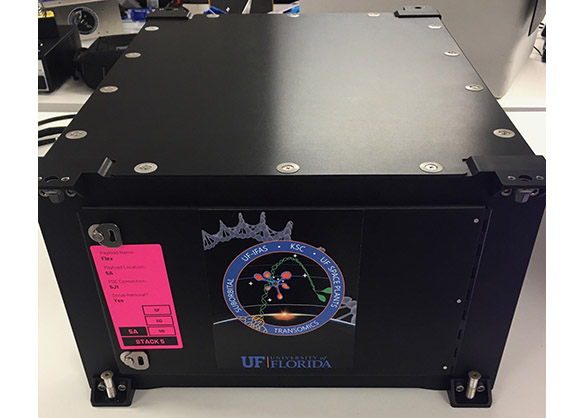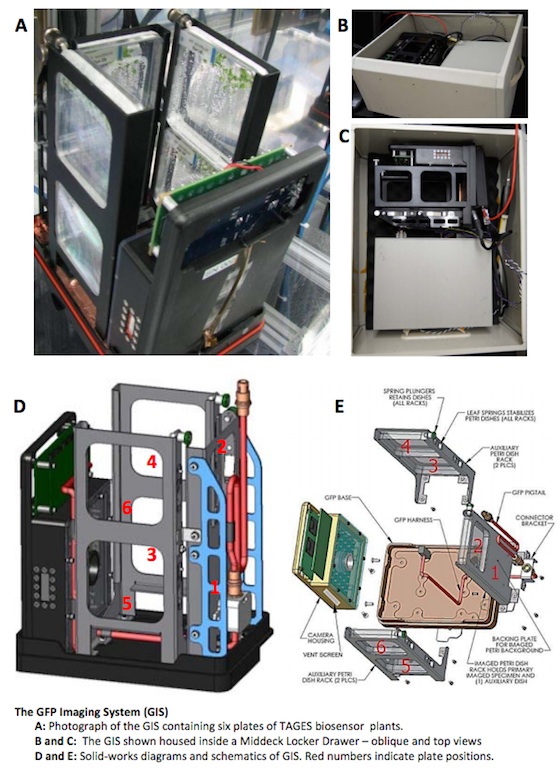Validating Telemetric Imaging Hardware for Crew-Assisted and Crew-Autonomous Biological Imaging in Suborbital Applications
PI: Rob Ferl, Anna-Lisa Paul (Co-I), University of Florida - Gainesville
PI: Rob Ferl, Anna-Lisa Paul (Co-I), University of Florida - Gainesville

- TA06 Human Health, Life Support and Habitation Systems
- TA08 Science Instruments, Observations and Sensor Systems
The fundamental technology to be advanced is an integrated bundle of biotechnology and spaceflight hardware instrumentation. The biotechnology consists of biosensor organisms, in this validation case Arabidopsis plants engineered with a variety of Green Fluorescent Protein (GFP) reporter genes designed to report the biological response of a plant, or plant tissue, to its environment. The goal is to advance the TRL of the GFP Imaging System (GIS) such that it can be designed into a stand-alone, mission-autonomous technology that is monitored solely by telemetry and is relevant to future parabolic and suborbital opportunities for science.
Successful complete testing of the GIS hardware within the suborbital flight environment would raise the TRL of the system to 6 or 7.
This technology has longer term development potential for small satellite and planetary lander applications, and speaks directly to aspects of the OCT Space Technology Roadmaps (Technology Area 10 Nanotechnology, with application to TA6 Life Support and Habitation Systems and TA08 Science Instruments), particularly the development of sensitive, next-generation imagers that can collect data telemetrically, and in real time.
The experiments are dedicated to characterization of biological effects of flights – therefore there are no specific or particular flight profiles requested. However it is likely that three flights of similar profile would be required to fully validate the data. Flight 1 will be dedicated to initializing the imager and biotechnology, and collection of initial data for comparison to previous flight data from ISS and parabolic flights. Flights 2 and 3 would go beyond simple operational tests toward tests that measure increasingly sensitive aspects of the imager with different reporter genes.
This payload is expressly designed to function within a standard middeck locker or nearequivalent rack system. There are no unique requirements. In fact, the ISS and FASTRACK deployment heritage specifically draws upon that standard hardware interface to enable fast progression through the suborbital TRL. The payload is flexibly deployed. There are no time limitations nor are there specific start or completion dates. Similarly there are no location limitations or requirements. The equipment and biology are transportable and the only on-site requirements are a table and power within standard office level climate controlled space.

Technology Details
-
Selection DateAFO4 (Aug 2012)
-
Program StatusActive
- 1 Parabolic
- 3 sRLV
Development Team
-
PIRob Ferl
-
PI Organization
-
Co-IAnna-Lisa Paul
-
Co-I Organization
-
SponsorUniversity of Florida
-
PartnersNASA/Kennedy Space Center
-
More Information

